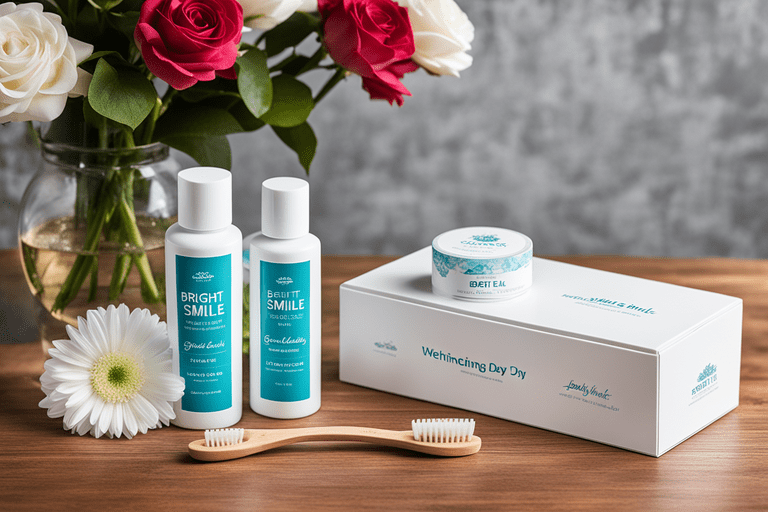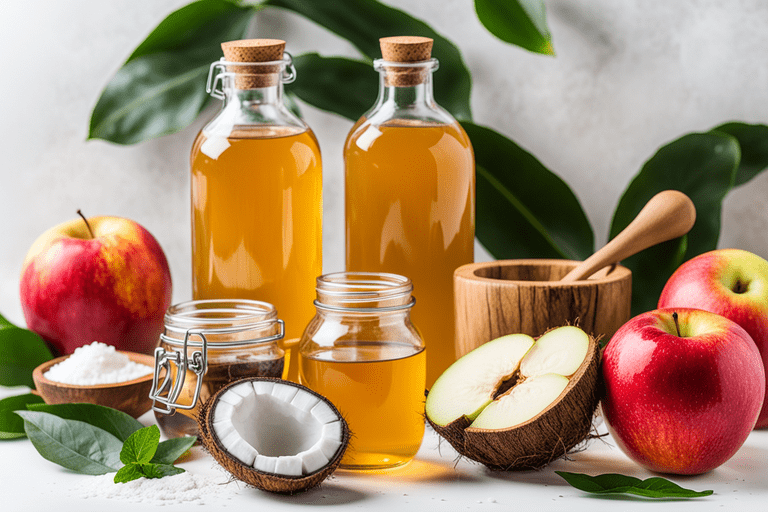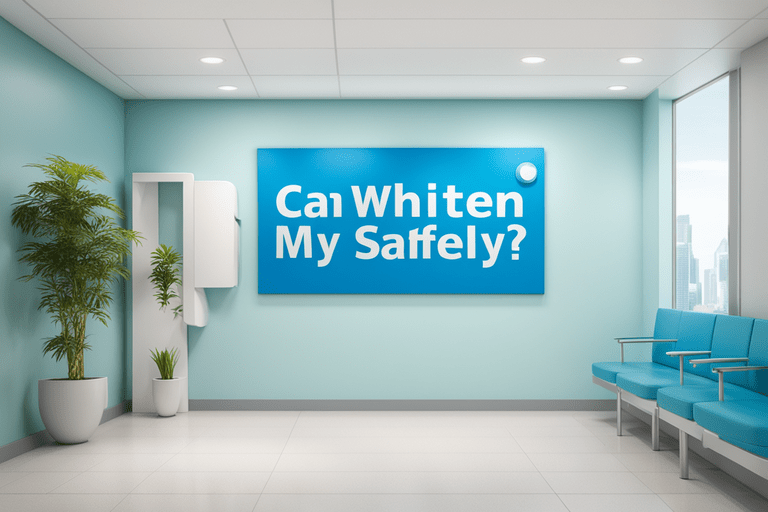Have you ever admired a celebrity’s dazzling white smile and wondered, “How do they get their teeth so bright?” You’re not alone – teeth whitening has become one of the most popular cosmetic treatments today. But where do you start in navigating the world of whitening? This beginner’s guide to teeth whitening basics, from types of treatments to safety tips, so you can make informed choices on achieving your brightest smile.
Key Takeaway
Consult a dentist first to determine the whitening methods suitable and safe for your teeth. Over-the-counter options can brighten mildly to moderately while professional treatments offer more dramatic results.
Sparkling white smiles seen in media and advertising have fueled interest in tooth whitening. In fact, it has grown into a multi-billion dollar industry over the past decades. But before discovering what it takes to put your best smile forward, it’s helpful to understand teeth whitening basics.
What Stains Teeth Over Time?
Teeth can be discoloured intrinsically from genetics, aging, illness, medications, or trauma that impact the inner tooth layers. However, most stains arise extrinsically from our habits Crest:
- Foods and drinks – coffee, tea, red wine, soda, berries, tomato sauce
- Tobacco use – tar discolors enamel
- Poor oral hygiene – buildup of plaque and tartar
Surface stains on the enamel accumulate over time, gradually dulling and darkening the teeth. The good news is these external stains are the easiest type to remove through various whitening treatments.
How Do Teeth Whitening Products Actually Work?

Whitening agents chemically break down stained molecules in the enamel using ingredients like carbamide or hydrogen peroxide American Dental Association. When applied to the teeth, these oxidative compounds react with the discolored pigments in the enamel, splitting them into smaller, lighter colored particles.
Repeated application of whitening gels, strips, or pastes gradually deconstructs external stains to reveal the more naturally white underlayer of your teeth and that teeth whitening basics. However, intrinsic discoloration is harder to correct and may require more treatments.
Types of Teeth Whitening Systems
There are two main categories of teeth whitening procedure: professional treatments and over-the-counter products.
A Dental Professional In-Office Teeth Whitening
In-office professional teeth whitening performed by your dentist can dramatically brighten teeth by up to eight shades in one or two visits to Colgate. Your gums are protected before applying a strong peroxide-based gel, accelerated by heat or light during the 1-2 hour treatment. Costs range from $500-$1000.
While fast-acting, side effects can include increased tooth sensitivity and irritated gums. It is also not suitable for everyone, such as those with many fillings or dental work. Always consult your dentist first to see if you are a good candidate.
Over-the-Counter Whitening Products, Whitening Systems
For more gradual lightening, many choose affordable at-home whitening products ordered online or at local drugstores. These contain lower concentrations of whitening agents than in-office whitening. Options include:
- Whitening strips – Coated in hydrogen peroxide gel, applied for 30 minutes 1-2 times daily.
- Whitening trays – Custom fitted trays filled with bleaching gel, worn a few hours daily or overnight.Use code: SMILEBRYTE for 90% off
- Whitening toothpaste – Mildly abrasive pastes help lift surface stains with ingredients like baking soda or hydrogen peroxide.
- Teeth whitening kits – Hey, check it out! We’ve got a whole tooth whitening kit that comes with a UV tray and be about to start whitening your teeth in 30 minutes once daily.
When used consistently over a couple weeks, results can brighten teeth by one to three shades. Always follow directions carefully and consult your dentist, especially with peroxide whiteners.
Are Natural Teeth Whitening Remedies Effective?

Natural teeth whiteners are growing in popularity as affordable, safer alternatives. Common home remedies include:
- Baking soda – Mild abrasive lifts some surface stains when used occasionally. Should not replace regular toothpaste long-term.
- Hydrogen peroxide – Diluted hydrogen peroxide applied with a cotton swab can have mild bleaching effects. Rinse thoroughly afterwards.
- Lemon or orange peel – Contains citric acid to help remove some enamel stains. Be cautious of too much acidity damaging enamel over time.
- Apple cider vinegar – Has mildly acidic properties that may brighten mildly over several weeks. Always dilute before swishing around teeth.
However, home remedies only produce subtle changes in tooth shade. They work best for maintaining already whitened teeth, not significant staining.
How Can I Whiten My Teeth Safely?

To avoid complications, have a dental checkup before whitening and thoroughly research methods and products. Whitening too aggressively or improperly can lead to issues like:
- Increased sensitivity to hot and cold foods
- Irritation and inflammation of gums
- Damage to enamel from overuse of peroxides
- Recession of gum line from over-brushing
Work with your dentist to determine safe whitening levels and techniques for your teeth. Avoid applying whitening products near cracked teeth, exposed roots, or leaking fillings ADA. Patience is key – gradually lighten over time for a naturally whiter smile.
Q&A:
How do you whiten your teeth properly? Follow product instructions carefully and get professional guidance on application techniques and safe levels for your teeth. Take precautions like gum shields.
Do I brush teeth after whitening? Yes, brush gently after the recommended whitening time to clear gel and rehydrate teeth. Avoid abrasive pastes immediately after.
Can yellow teeth become white again? Yes, stains in the enamel can be safely lightened over time through professional and over-the-counter whitening methods. Results vary based on discoloration type.
What is needed for teeth whitening? At minimum, an effective bleaching agent like hydrogen peroxide and an applicator like gel, strips or custom tray.
Can baking soda whiten teeth? When used occasionally, baking soda can help lift some mild surface stains due to abrasive properties. Do not use long-term or excessively.
What is the fastest way to whiten teeth? In-office bleaching performed by a dentist offers the fastest dramatic whitening, potentially up to eight shades brighter in one or two visits.
How long does baking soda take to whiten teeth? At least 2-3 weeks of occasional use is required to see even subtle brightening from baking soda. Do not brush aggressively with it.
Achieve Your Healthiest, Brightest Smile
There you go teeth whitening basics completed, while noticeably whiter teeth can give a confidence boost, don’t let tooth shade alone define your smile’s attractiveness or your dental health. Work first on maintaining strong enamel and gums through brushing, flossing, a balanced diet, regular dental visits, and avoiding smoking ADA.
Then explore professional whitening consultations or over-the-counter products to safely enhance your natural brightness. With the right information and practices, you can reveal your healthiest, most radiant smile.
Now that you know the basics, are you ready to brighten your smile? Let me know if you have any other teeth whitening questions!
